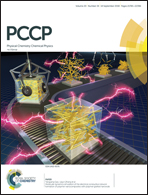Methanol as a hydrate inhibitor and hydrate activator
Abstract
During their transport to processing plants, produced hydrocarbon streams are always accompanied by water appearing as a separate phase in contact with the hydrocarbons. Dramatic temperature and pressure changes during processing can lead to condensation of water and possibly hazardous formation of ice and hydrates. Historically, methanol has been the dominating chemical agent added to prevent the formation of solid water phases. In this work, the technique of molecular dynamics simulation has been utilized to investigate and illustrate the impact of methanol as a surfactant in a water–methane system. We have found that adding 5% of methanol boosted the diffusion of methane through the interface by more than 40% compared to the reference system. The amount of methane accumulated in the aqueous phase was also significantly higher. This effect will likely also result in a significant increase in homogeneous and heterogeneous hydrate formation in these regions in the case of the methanol-stimulated system, and thus necessitate the application of classical nucleation theory. In particular, our analysis emphasised the fact that several different hydrates may form in this scenario. In case of the homogeneous hydrate formation, there will theoretically exist an infinite number of hydrate phases corresponding to concentrations spanning the range between methane's solubility and its hydrate stability limit.



 Please wait while we load your content...
Please wait while we load your content...